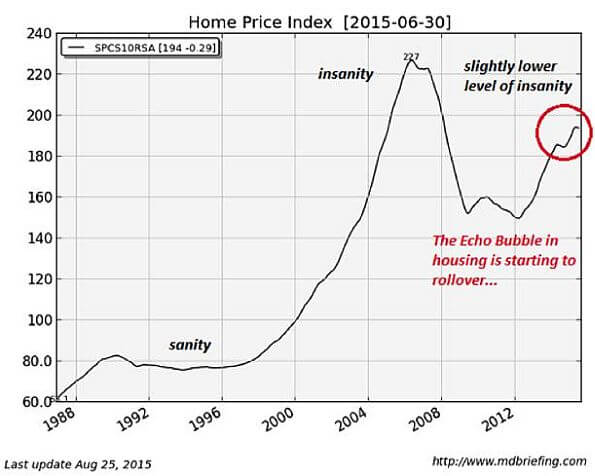 Charles Hugh Smith – Markets discover price via supply and demand: Big demand + limited supply = rising prices. Abundant supply + sagging demand = declining prices.
Charles Hugh Smith – Markets discover price via supply and demand: Big demand + limited supply = rising prices. Abundant supply + sagging demand = declining prices.
Eventually, prices rise to a level that is unaffordable to the majority of potential buyers, with demand coming only from the wealthy. That’s the story of housing in New York City, the San Francisco Bay Area and other desirable locales that are currently magnets for global capital.
In the normal cycle of supply and demand, new more affordable housing would be built, and prices would decline.
But that isn’t happening in hot real estate markets in the U.S. What’s happening is rental housing is being built to profit from rising rents and luxury housing is being built to meet the demand from wealthy overseas buyers.
With limited land in desirable urban zones and high development fees, it’s not possible to build affordable housing unless the government subsidizes the costs.
Meanwhile, the supply of existing homes for sale is limited by the owners’ recognition that they won’t be able to replace their own home as prices soar; it makes financial sense to stay put rather than sell and try to move up.
Some homeowners are cashing in their high-priced homes and retiring to cheaper regions. But this supply is being overwhelmed by a flood of offshore cash seeking real estate in the U.S.
This is part of the global capital flows I described in my recent analysis What Happens Next Will Be Determined By One Thing: Capital Flows. As China and the emerging market economies stagnate, capital that was invested in these markets in the boom years is moving into dollar-denominated assets such as bonds and houses.
This globalization of regional housing markets is pricing the middle class out of housing in areas that also happen to be strong job markets.
Many commentators are concerned that a nation of homeowners is being transformed into a nation of renters, as housing is snapped up by hedge funds and wealthy elites fleeing China and the emerging markets.
But will current conditions continue unchanged going forward?
Let’s start with the basics of demographic demand for housing and the price of housing.
Demographics & Housing Valuations
There are plenty of young people who’d like to buy a house and start a family (a.k.a.new household formation), but few have the job or income to buy a house at today’s nosebleed levels — a level just slightly less insane than the prices at the top of Housing Bubble #1:

(Charts courtesy of Market Daily Briefing)
The current Housing Bubble #2 (also known as the Echo Bubble) certainly isn’t being driven by rising household income, as median household income has declined when adjusted for inflation: Continue reading . . .
Charles Smith is a Guest Contributor for Shift Frequency
SF Source Of Two Minds Oct 2015
[widget id=”text-44″]
